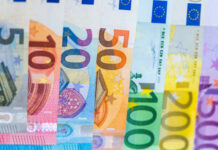The dollar weakening might further unfold in the coming months amid the latest economic and political concerns. Investors’ are increasingly worried that many of the promises President Trump made during his presidential campaign will not be materialized. The greenback has fallen 4% against the yen since the beginning of the year, while the dollar index is down 6%.
The assurances of big tax cuts, massive infrastructure spending and deregulation that President Donald Trump gave during his presidential campaign are being questioned after the Senate Majority Leader, Mitch McConnell, on Tuesday delayed a vote on legislation to repeal the Affordable Care Act. Amid the resistance from Republican senators, there is not enough support to even start the debate on the bill. In fact, the bill has had a patchy path to get to the Senate, as it got a very narrow approval in the House of Representatives at the beginning of May.
This signals a potentially difficult path for the President’s remaining plans, most importantly the tax reform one. After the surprising win in the November elections, the greenback and the US equity markets priced in all of Trump’s promises. However, considering the current situation, equities and the dollar might be somewhat overvalued and heading for a correction.
Recent data out of the US has been on the soft side and the absence of the proposed fiscal spending stimulus is not helping spur the lost growth momentum. More so, the IMF has recently downgraded the expected US GDP growth for the next couple of years.
There is little to suggest that the US economy is about to hit a turmoil, especially with the tight labour market, though a more tepid growth period might be expected. Some of the data to be released this week, such as the first quarter GDP growth and core PCE for May might signal the latest economic situation. Poor data readings may cause an immediate weakening of the greenback.
Trump’s campaign promises also inflated investors’ hopes of a faster pace of rate increases by the Fed due to the potential stronger economic growth. However, the expectations that the Fed will raise rates during the September or December meeting have been diminishing. The Fed fund futures imply an 18% probability for the September rate hike and below 50% for the December meeting.
Overall, the possibility of the dollar strengthening further is getting slimmer by the day. While some daily dollar/yen gains might be expected throughout the summer, a big comeback for the pair to maintain an upward momentum above the 113 handle is looking unlikely.
By contrast, the euro’s rally following the receding threat of deflation, according to European Central Bank President Mario Draghi, has turned the eurozone currency to one of this year’s best performing against the US dollar. Euro/dollar pair broke above the 1.14 handle, with some analysts expecting the pair to go above the 1.16 handle.
The improving economic growth, rising inflation and a reduction in the unemployment rate are supporting the euro in the medium-to-long-term. Additionally, the currency should get a lift if the planned labour reforms by the newly elected French President go through.
By contrast to the US, political risks in the eurozone have largely dissipated. The focus is on the German elections in September, with the latest poll showing that Angela Merkel’s conservative party has the highest support since September 2015.
Considering all the above, the strength of the forex market might be on the side of the old continent, as the euro gains against the greenback. Very slow to non-existing movement in the proposed reforms by President Trump could cause the dollar to weaken further during the second half of the year. In the unlikely event of the US tax code getting an overhaul this year, the dollar has an upside potential against the yen.















